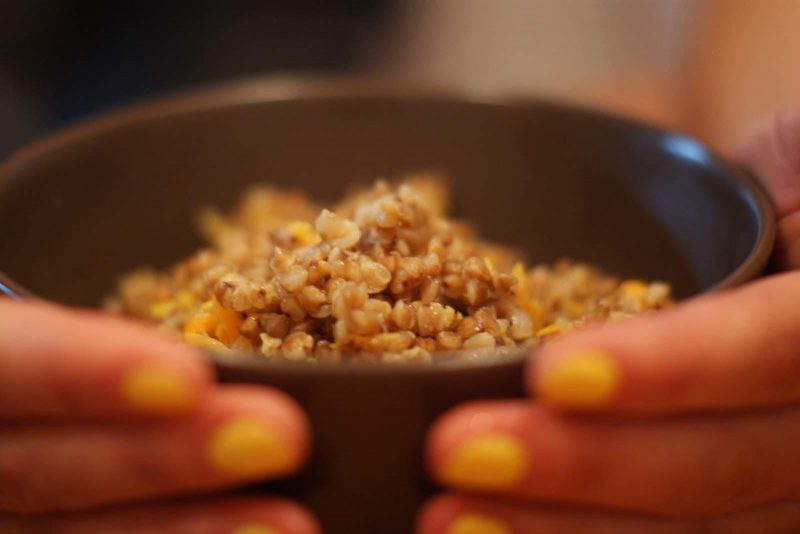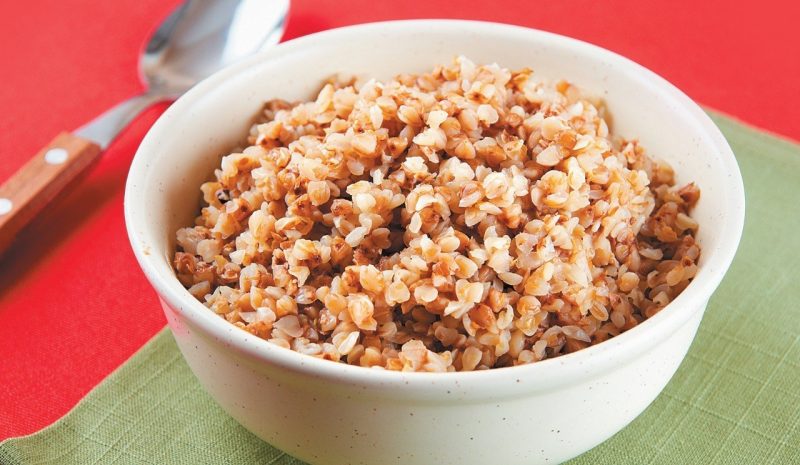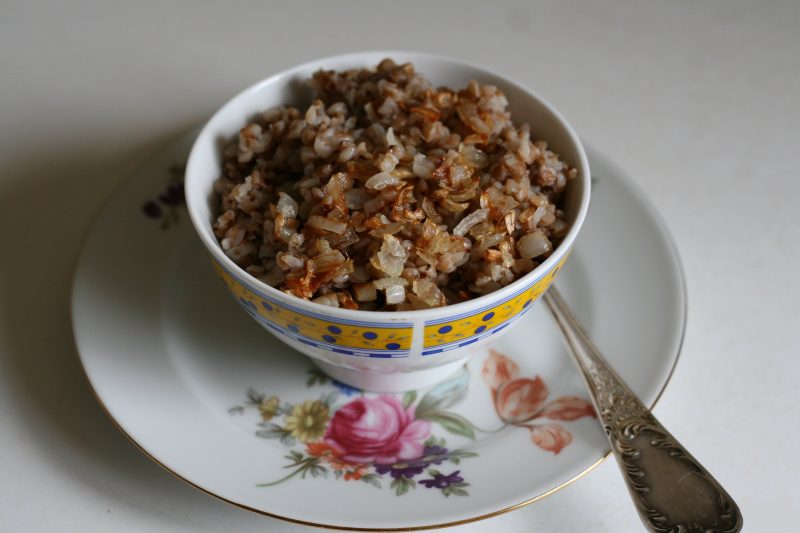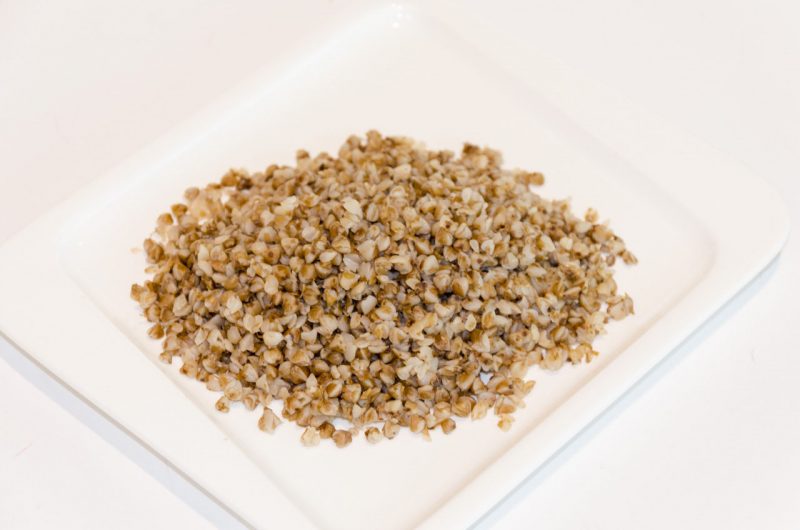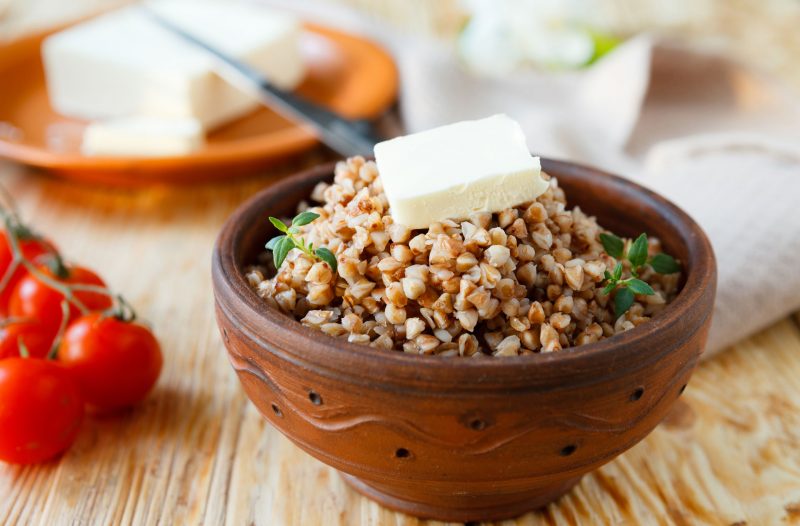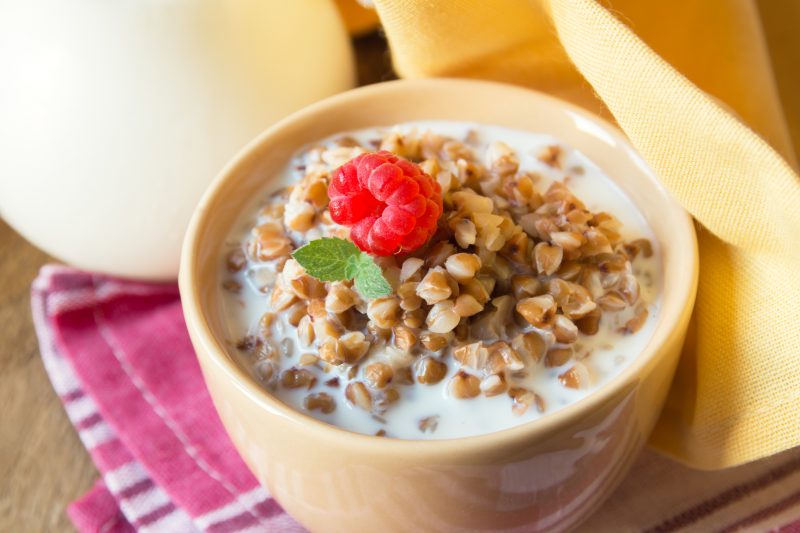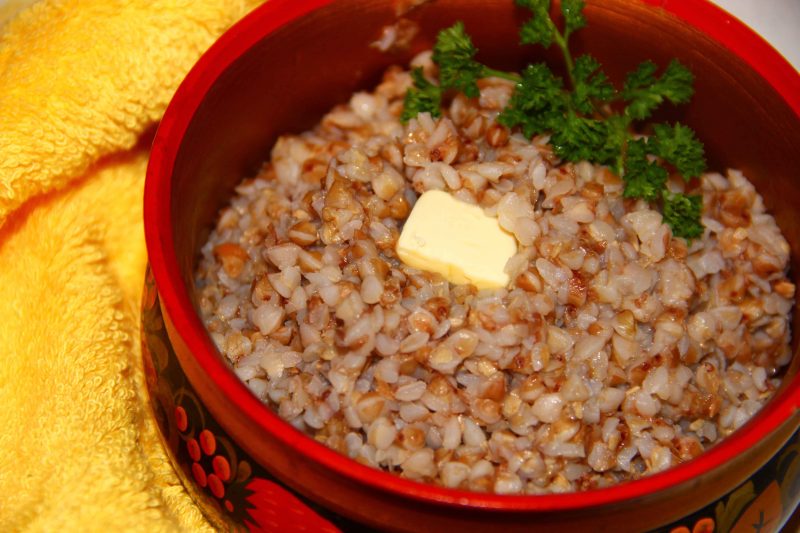Buckwheat is perhaps one of the most popular products among those who monitor their weight. Diet on this cereal is a budgetary and effective way to find the desired harmony in a short time. How many calories are in buckwheat, what is useful and how effective is the diet on it?
Material Content:
Calorie content, BJU, the benefits of buckwheat porridge
Buckwheat is already good because it is genetically dear to us. Her centuries-old presence on the tables of our ancestors is a historical fact. And this means that, unlike overseas diet products, buckwheat is very rarely the cause of allergies, for which it is also loved by pediatricians. As a complementary food, buckwheat porridge appears one of the first in the diet of babies.
There are several varieties of buckwheat. The core is the most popular among them. This is a whole buckwheat grain, which goes to the preparation of friable cereals. A variant of the kernel is Veligork - croup without a ribbed surface. Crushed grain - made, suitable for viscous cereals. You can also find buckwheat of an unusually light, greenish color. This is all the same core, but not past the stage of roasting. It is much less commonly used in cooking, but its nutritional and dietary value is slightly higher than that of the usual brown cereal.
Buckwheat also makes flour, which is gluten-free. This does not allow to use it in its pure form in the baking business, but it makes it possible to add flour to other types, and also use it for baking pancakes and muffins, which are less nutritious in comparison with wheat counterparts.
Buckwheat contains about 60% carbohydrates, and very few fats.“Buckwheat” carbohydrates are considered to be long digestible, porridge gives a long-lasting feeling of satiety, and in addition, it contains many biologically active elements that are important for the body. With a very low calorie content, this product is considered one of the best diet and helps to control weight.
Chemical composition and nutritional value
Buckwheat is considered one of the most useful and nutritious cereals, and is often prescribed as the main dish in medical nutrition. It has many important micro and macro elements necessary for the full functioning of the body.
High in buckwheat is also the iron content necessary for oxygen metabolism in the body. True, here we should make a reservation: sitting on a rigid buckwheat mono-diet, it will not work to fully provide the body with iron, since plant food contains an unearthly type of this substance. To assimilate such iron (as opposed to heme, which is found in food of animal origin), meat protein or vitamin C is necessary. Therefore, in order not to earn anemia, buckwheat should be consumed with meat or enriched with ascorbic acid.
A lot of buckwheat and such important substances as:
- calcium, without which it is impossible to find strong bones, teeth, healthy nails and hair;
- potassium, controlling the water-salt balance in the body and participating in the work of the heart;
- fluorine and phosphorus are important elements of a healthy skeletal system;
- iodine and zinc, without which the functioning of the endocrine system is impossible.
Buckwheat also contains B vitamins, among which there is folic acid (B9), which is so important for the functioning of the nervous and reproductive systems, and the lack of which, at the stage of embryo formation, threatens serious fetal pathologies. Vitamin E present in buckwheat is also important. It is a natural antioxidant and an important element in the synthesis of hormones. Vitamin PP, known as nicotinic acid, is also present in cereals. He takes an important part in the metabolism, which is very significant in controlling body weight.
The protein found in buckwheat is easily digestible. And, by the way, in its content this cereal is superior to all others.
Calorie content and buckwheat buckwheat in 100 grams
In its raw form, buckwheat is distinguished by about 312 kcal per 100 g. The ratio of BJU (proteins, fats and carbohydrates) in it is 12.5 g: 3.3 g: 62 g.
However, the calorie content of raw buckwheat is a relative indicator, because during the heat treatment of grain, the number of calories changes. How high the energy value of the finished dish will turn out depends on the method of cooking and on which ingredients are included in it besides buckwheat.
How many calories of boiled buckwheat
Cooking is the main option for cooking buckwheat. Boiled and appetizingly friable, it is a universal side dish or an independent dish. Nutritionists calculated how many calories are in boiled buckwheat on the water. The result can comfort those who adhere to the buckwheat diet: per 100 g of food - no more than 100 kcal. An indicator of energy value will be slightly larger if the water is replaced with meat broth.
However, with such cooking, a huge part of the useful substances is lost. You can partially make up for this shortcoming by enriching the side dish with vegetables or herbs.
People's advice:pink radiola
Steamed boiling water without salt
The most dietary and healthy cooking method is buckwheat on water without boiling. For this, the cereals are sorted, washed and poured with boiling water in a ratio of 1: 2-1: 3. It is believed that the optimal time for the swelling of cereals is about 4 hours. But after 40 minutes, covered with a tight lid, buckwheat is steamed, and it is quite possible to eat.
A good option is to brew cereals in the evening. For the greatest friability and keeping the food warm, it is useful to use a thermos.
Buckwheat soaked in cold water retains even more nutrients and nutrients.True, to achieve readiness, the product requires more time than with the "hot" method, therefore it is more advisable to take care of the dish the day before, pouring the cereal with water in the evening.
People's advice:goji berries - useful properties and contraindications
It is not recommended to season buckwheat without cooking with either salt or sugar. As a “concession”, some prefer to lightly flavor the porridge with soy sauce or vegetable oil (for example, linseed). But the calorie content of the dish will increase.
The energy value of unsalted steamed buckwheat is not more than 90 kcal.
In buckwheat with milk
Boiled buckwheat with milk significantly "grows" in calories. The final indicator will depend on the proportion of cereals and milk, what is the fat content of the last component. On average, the energy value of such food ranges from 120 to 200 kcal.
With butter
“Do not spoil the porridge with oil” - people say. Of course, who would argue? In terms of taste, buckwheat flavored with butter is superior to lean. The calorie content of such a dish also increases. However, here everything is not so clear, depending on which oil is chosen for dressing - vegetable or cream.
On average, calories in 100 grams of buckwheat cereal in vegetable oil do not grow up much. In a teaspoon of such fat - about 5 g, which means that, seasoning boiled or steamed buckwheat with vegetable oil, you can add a dish of 40 kcal! There are pluses to this: vegetable oils saturate the body with essential fatty acids and vitamins (in particular, E), without adding a single gram of cholesterol.
Butter is tastier than vegetable oil, but it is also partially harmful (it contains cholesterol). By caloric content, it differs slightly from the analogue of non-animal origin. Yes, and spent a little less. A teaspoon of butter (10 g) contains approximately 80 kcal. Boiled buckwheat seasoned with it becomes tastier and calorie!
The answer to the question of how to cook buckwheat, how to season it, whether to use fats, depends on what purpose the product is prepared. If you want to pamper yourself with a delicious side dish, without thinking about the calories absorbed, then spices, and butter, and milk - all this goes perfectly with the presented cereals. But if the goal is weight loss, it is more rational to use buckwheat without any additives, which is the most low-calorie, nutritious and healthy.


